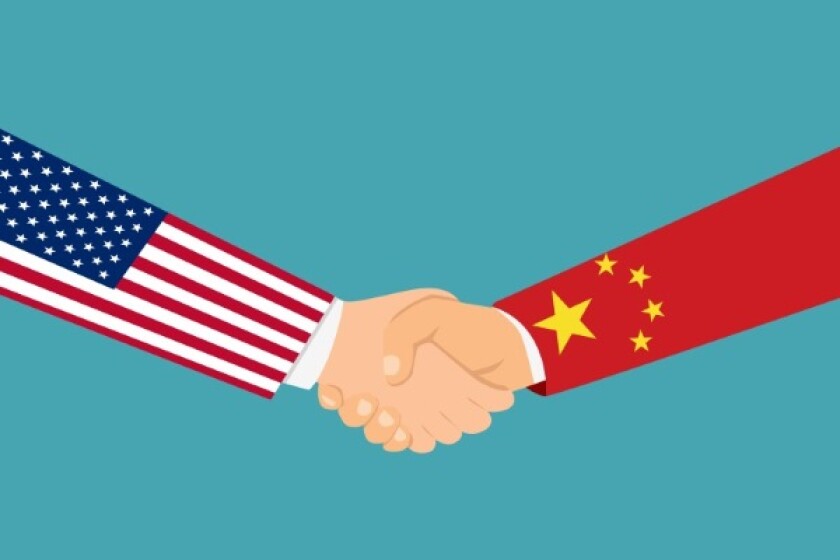US industry sources say they feel very much the same as their Chinese counterparts about the countries’ latest trade developments, although they are keen to see even greater reform set out in the next draft.
China-based in-house counsel were cautiously optimistic and even extremely hopeful about the first phase of the US-China trade deal, according to an article published by Managing IP this week.
Among key reforms set out by the new agreement, signed by Donald Trump on January 15, are greater protections for trade secrets, clarity for patent linkage and the creation of patent extensions for human therapeutics.
“China has done a great job at taking US IP in the past,” says the vice president of IP for a US telecoms company. “I’m not anti-China; they’ve just been smart and have played by their rules. We’re trying to change that with this deal, and Donald Trump’s goal is an important and noble one.
“It falls short of what is needed, but it is a step in the right direction. There is not a lot of value to be gained in this for a lot of businesses yet, but it will hopefully be a start to building respect for US IP.”
Rebuilding bridges
For the head of patents at a software company in California, the new deal will hopefully serve an important role in improving relations between US and Chinese companies.
He explains that numerous US businesses, including his, had been interested in discussing patent cross-licensing with Chinese companies before the start of the US-China trade disputes in 2018. His company had successfully engaged with several firms, he adds.
These dealings were difficult to continue after US-China relations deteriorated, and that development left businesses uncertain over whether they could successfully navigate the Chinese company-owned patent landscape in the US and elsewhere.
“This development had a pretty serious impact, because Chinese companies have thousands of patents in the US,” he says. “If US businesses cannot mitigate against the risk of patents being asserted against them or transferred to assertion entities, that’s a problem.”
He adds that the trade deal is a step in the right direction for rebuilding the relationships that were put on hold by the trade war.
Pharma winners
In total agreement with their Chinese counterparts, US-based in-house counsel at pharmaceutical companies tell Managing IP that the first iteration of the US-China trade deal is a huge boon for innovative drug developers.
Not only has the agreement set out terms for patent extensions on human therapeutics, similar to those in the US and European supplementary protection certificates, it has also introduced the ability to use supplementary data in patent applications and given greater clarity on patent linkage.
Corey Salsberg, global head of IP affairs at Novartis in Washington DC, says these changes are long overdue and represent a great result for the both domstic and international pharmaceutical innovators.
“We have a significant drug development operation in China and invest heavily there. We are optimistic that their laws will continue to improve in a direction that enables us to facilitate robust growth by encouraging innovation,” he says.
“From the perspective of the pharma industry, this phase one deal is a significant improvement – at least on paper.”
John Todaro, managing counsel for patents at Merck in New York, adds that promises have been made in China before about patent extensions and linkage, so it is good to have these matters written into an international agreement.
“It does sound good from the pharma side of things,” he says. “But it’s definitely a matter of wait and see at this point.
“If patent linkage comes to China, we will have to list all our patents. We know how to do that because we’ve done it in Korea before. We got all our information together to do this in China when it first announced plans for patent linkage, but that was two years ago.”
We don’t need no regulation
There are more changes that pharma companies would like to see put on the negotiation table, however. Salsberg at Novartis says he would like to see regulatory data protections similar to those offered in the US and EU created in China.
“Unlike patents, which provide protection from when they are filed, regulatory data protection in the US starts from when the drug gets approved by the regulator.
“That means that even if the patent term has run out - for example, because of a prolonged R&D timeline - there is still an incentive to continue to develop the medicine, and to invest in and enable its launch in those countries that have such protections in place. Such a development, were it to be included in phase two of the deal as we hope it will, would therefore establish this important incentive in China.”
US-China relations have been somewhat tense for the past two years, and it seems industry leaders believe this IP deal is exactly what is needed.
The only questions that remain are whether more terms will be put on the table to the benefit of China and the US, and whether the final deal can be properly implemented.










